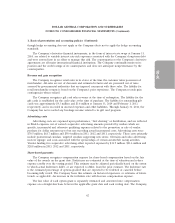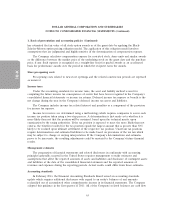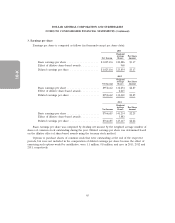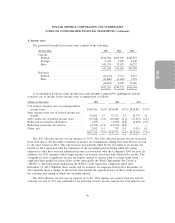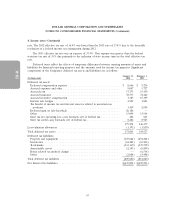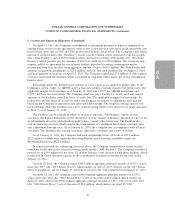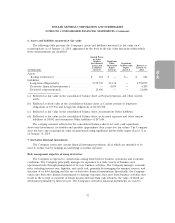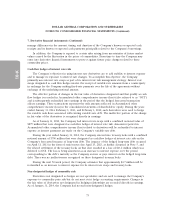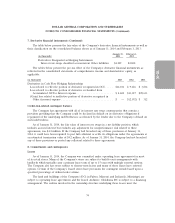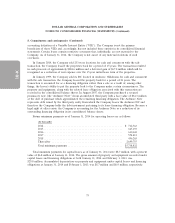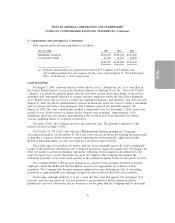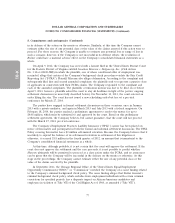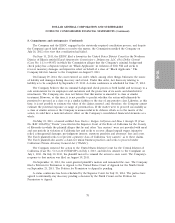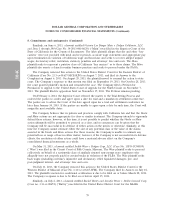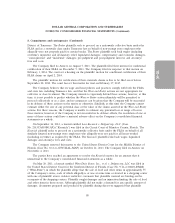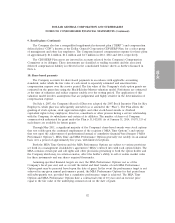Dollar General 2013 Annual Report Download - page 149
Download and view the complete annual report
Please find page 149 of the 2013 Dollar General annual report below. You can navigate through the pages in the report by either clicking on the pages listed below, or by using the keyword search tool below to find specific information within the annual report.
DOLLAR GENERAL CORPORATION AND SUBSIDIARIES
NOTES TO CONSOLIDATED FINANCIAL STATEMENTS (Continued)
6. Assets and liabilities measured at fair value
The following table presents the Company’s assets and liabilities measured at fair value on a
recurring basis as of January 31, 2014, aggregated by the level in the fair value hierarchy within which
those measurements are classified.
Quoted Prices
in Active
Markets Significant
for Identical Other Significant
Assets and Observable Unobservable Balance at
Liabilities Inputs Inputs January 31,
(In thousands) (Level 1) (Level 2) (Level 3) 2014
Assets:
Trading securities(a) ..................... $ 621 $ — $— $ 621
Liabilities:
Long-term obligations(b) .................. 2,772,739 21,336 — 2,794,075
Derivative financial instruments(c) ........... — 4,109 — 4,109
Deferred compensation(d) ................. 21,696 — — 21,696
(a) Reflected at fair value in the consolidated balance sheet as Prepaid expenses and other current
assets.
(b) Reflected at book value in the consolidated balance sheet as Current portion of long-term
obligations of $75,966 and Long-term obligations of $2,742,788.
(c) Reflected at fair value in the consolidated balance sheet as noncurrent Other liabilities.
(d) Reflected at fair value in the consolidated balance sheet as Accrued expenses and other current
liabilities of $4,092 and noncurrent Other liabilities of $17,604.
The carrying amounts reflected in the consolidated balance sheets for cash, cash equivalents,
short-term investments, receivables and payables approximate their respective fair values. The Company
does not have any recurring fair value measurements using significant unobservable inputs (Level 3) as
of January 31, 2014.
7. Derivative financial instruments
The Company enters into certain financial instrument positions, all of which are intended to be
used to reduce risk by hedging an underlying economic exposure.
Risk management objective of using derivatives
The Company is exposed to certain risks arising from both its business operations and economic
conditions. The Company principally manages its exposures to a wide variety of business and
operational risks through management of its core business activities. The Company manages economic
risks, including interest rate, liquidity, and credit risk, primarily by managing the amount, sources, and
duration of its debt funding and the use of derivative financial instruments. Specifically, the Company
enters into derivative financial instruments to manage exposures that arise from business activities that
result in the receipt or payment of future known and uncertain cash amounts, the value of which are
determined primarily by interest rates. The Company’s derivative financial instruments are used to
72
10-K


